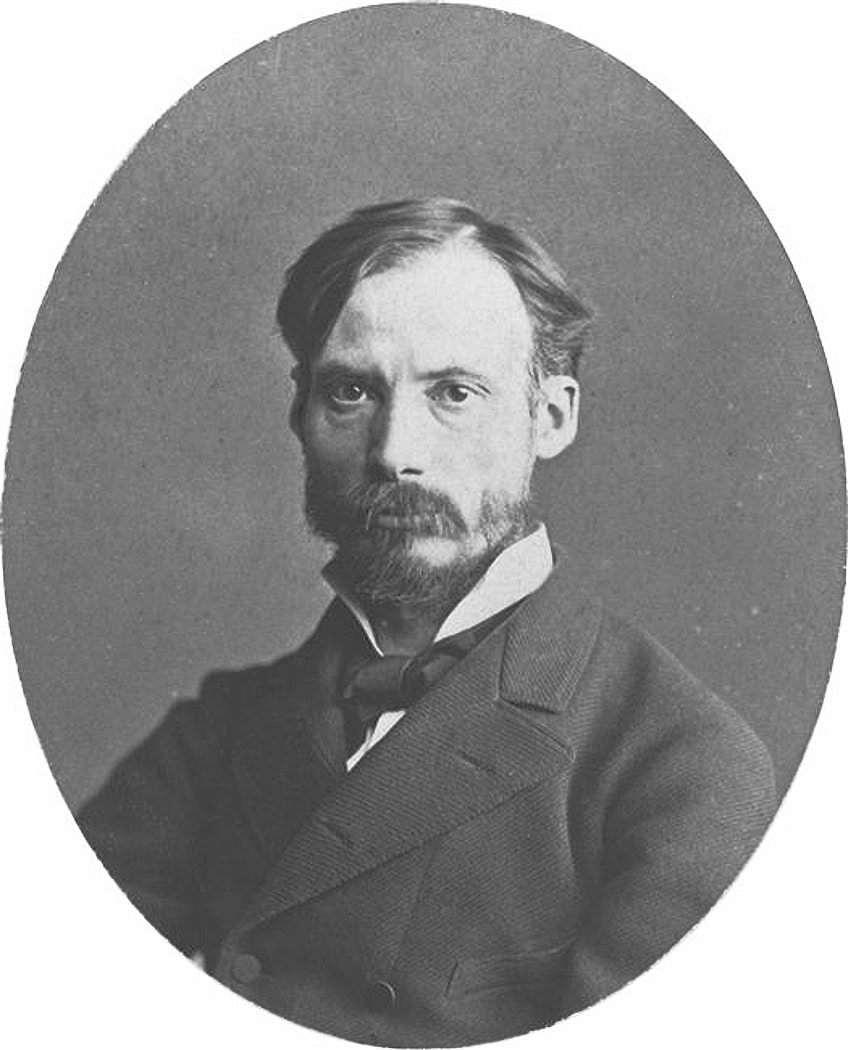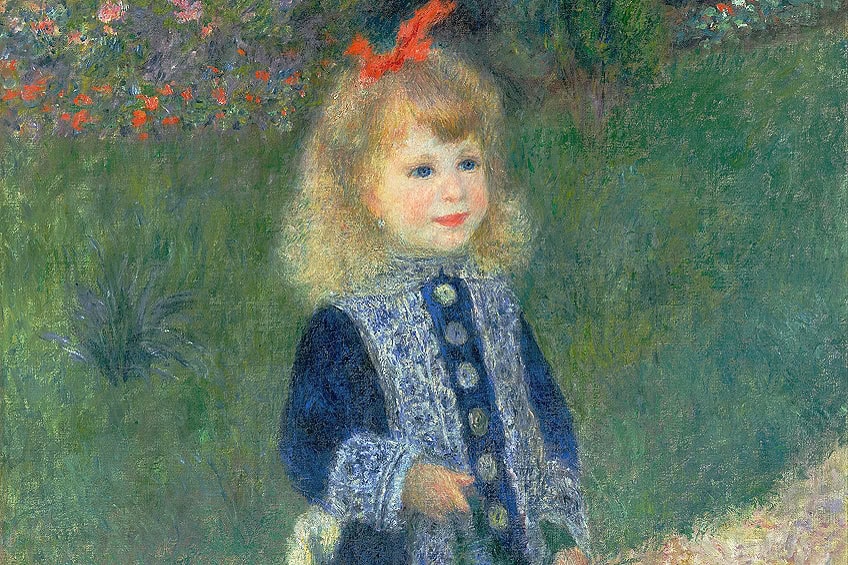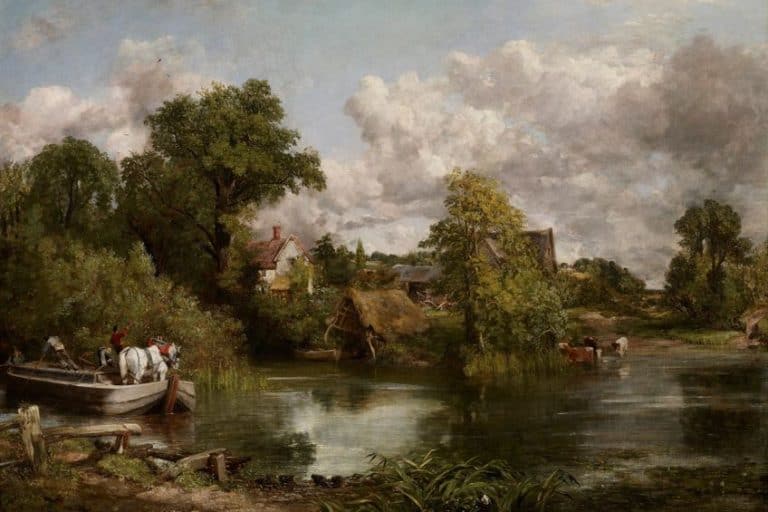“A Girl with a Watering Can” by Pierre-Auguste Renoir – An Analysis
A Girl with a Watering Can by Pierre-Auguste Renoir is a quintessential example of the artist’s masterful ability to capture the innocence and charm of childhood. Painted in 1876, this work exemplifies Renoir’s Impressionist style, characterized by its vibrant color palette, loose brushstrokes, and focus on light and atmosphere. The painting depicts a young girl in a blue dress, holding a watering can amidst a lush garden setting. Her rosy cheeks and playful expression convey a sense of joy and spontaneity, reflecting Renoir’s interest in everyday moments and the beauty of the natural world. This artwork not only showcases Renoir’s technical skill but also his sensitivity to the nuances of human emotion, making it a beloved piece in the canon of Impressionist art.
Key Takeaways
- Renoir painted A Girl with a Watering Can in 1876 in Monet’s garden at Argenteuil.
- The painting is housed at the National Gallery of Art in Washington, D.C.
- Renoir’s style in this work highlights vibrant colors and controlled brushwork.
Background of the Artwork
| Artist | Pierre-Auguste Renoir (1841 – 1919) |
|---|---|
| Date Created | 1876 |
| Medium | Oil on canvas |
| Genre | Portrait |
| Period/Movement | Impressionism |
| Dimensions (cm) | 100 × 73 |
| Series/Versions | Single version |
| Where Is It Housed? | National Gallery of Art, Washington, D.C., United States |
| What It Is Worth | Not publicly auctioned; significant cultural and historical value |
A Girl with a Watering Can by Pierre-Auguste Renoir stands as a quintessential example of Impressionist art painted in 1876. Set in Claude Monet’s famed garden at Argenteuil, this piece encapsulates the movement’s embrace of vibrant color and natural light. Renoir, through his mature impressionist style, brings to life the image of a young girl in a blue dress, holding a watering can, conveying both innocence and tranquility. Housed in the National Gallery of Art in Washington, D.C., this masterpiece reflects Renoir’s adeptness at blending controlled brushwork with a fresh and radiant color palette.

The painting showcases the artist’s ability to capture the subtle details of everyday life while portraying a charming scene that feels both intimate and universal. Renoir’s depictions of women and children during this period remain highly celebrated, and A Girl with a Watering Can is no exception. Its provenance indicates that it was possibly commissioned for the Sellière Collection in Paris before finding its way to its current home. The painting’s endearing subject and masterful technique continue to attract art lovers and scholars alike.
Painter’s Profile
Pierre-Auguste Renoir was a prominent French artist and a leading figure in the Impressionist movement. Known for his vibrant light and color, he frequently depicted everyday scenes of French life. Renoir’s loose brushwork and vivid color palette were hallmarks of his style.
By 1876, he had already established himself among the ranks of the Impressionists, with works often focusing on social settings and the subtleties of human expressions.
Renoir’s friendship with Claude Monet, another leading Impressionist, greatly influenced his work. They often painted together, sharing techniques and ideas, as seen in A Girl with a Watering Can, which was possibly painted in Monet’s garden in Argenteuil.
Historical Context
The year 1876 was a pivotal period for the Impressionist movement. The second Impressionist exhibition was held in Paris, further establishing the movement’s importance in the art world. During this time, Renoir was experimenting with figure painting, shifting from landscape-centric works to more intimate, domestic scenes. This piece, in particular, showcases his evolving style – blending traditional portraiture with modern Impressionist techniques.

A Girl with a Watering Can exemplifies the freshness and radiance typical of the Impressionist palette. Renoir’s handling of light and color, combined with his focus on the subject’s playful innocence, reflects broader contemporary artistic trends. The choice of a child as the subject highlights the Impressionists’ interest in capturing fleeting moments and everyday life.
Artistic Elements of A Girl with a Watering Can
A Girl with a Watering Can by Pierre-Auguste Renoir exemplifies characteristics of the Impressionist style through its use of vivid colors, attention to light, and expressive brushwork. This remarkable painting captures a charming moment, highlighting both the beauty of its subject and Renoir’s technical prowess.
Subject Matter
The painting depicts a young girl standing in a garden, holding a watering can. She is dressed in a blue dress with white trim, and her curly blond hair frames her face. Renoir often chose to paint figures, particularly women and children, showcasing everyday moments imbued with grace and charm.
This girl, presumed to be from Renoir’s neighborhood, embodies innocence and playfulness.
Color and Technique
Renoir uses a vibrant palette characteristic of the Impressionist movement. The blue dress stands out against the lush greenery of the garden, creating a striking contrast. His technique involves delicate, controlled brushstrokes, which differ from the more spontaneous marks typical of other Impressionist artists. This approach allows for a clearer portrayal of the girl’s features and the surrounding foliage.

Texture and Line
The painting’s texture is achieved through layered oil paint, giving the scene a sense of depth and dimension. Renoir’s precise handling of lines and soft blending creates a smooth, almost refined look.
The curls in the girl’s hair and the intricate details of the watering can showcase Renoir’s meticulous attention to form and detail.
Symbolism and Subjects
The elements within the scene, such as the watering can and the garden setting, symbolize growth and nurturing. The girl’s cheerful expression and posture convey a sense of innocence and joy. Renoir’s placement and depiction of these subjects not only highlight the daily life of 19th-century France but also reflect the artist’s admiration for the simplicity and beauty found in everyday encounters.

Provenance and Exhibition History
A Girl with a Watering Can by Pierre-Auguste Renoir has a notable lineage of ownership and has been exhibited in several significant venues. The painting’s journey through time highlights its importance and appeal.
Ownership Timeline
Initially created in 1876, the painting was possibly commissioned for the Sellière Collection in Paris. By 1898, it was in the possession of Comte Batthiany. Alexandre Rosenberg, a prominent Parisian art dealer, later owned it. The painting made its way to the Canadeesche Hypothek Bank and passed through the hands of Marcel Kapferer. Étienne Bignou and the prestigious gallery M. Knoedler & Co. in New York also handled the work. Chester Dale, a notable American art collector, ultimately acquired it. His collection, including this piece, was later bequeathed to the National Gallery of Art in Washington, D.C.
Public Display
Since joining Chester Dale’s collection, A Girl with a Watering Can has been prominently displayed at the National Gallery of Art, Washington, D.C. The painting is an essential part of the gallery’s Impressionist collection. Visitors can admire Renoir’s meticulous technique and vibrant palette. The gallery ensures its preservation under optimal conditions to maintain the painting’s integrity. Exhibitions featuring Renoir’s work often highlight this piece due to its significance in the Impressionist movement.
Additionally, it has been included in special exhibitions that travel to major art institutions worldwide.
Influence of A Girl with a Watering Can Today
The painting continues to captivate audiences with its depiction of innocence and grace. It has inspired contemporary art and culture, emphasizing the timeless appeal of Renoir’s technique. Scholars and art historians frequently discuss the work, noting its critical role in Impressionist art. Educational programs at the National Gallery of Art often feature this painting, emphasizing its importance within the art world. The influence of A Girl with a Watering Can extends beyond just visuals; it embodies a pivotal moment in art history where the nuances of human expression and bright, dynamic colors became a focal point.
A Girl with a Watering Can stands as a testament to the Renoir’s remarkable talent for capturing the essence of youth and the fleeting beauty of everyday life. This painting, with its vivid colors, soft lighting, and tender portrayal of a young girl, exemplifies the key elements of the Impressionist movement. It invites viewers to appreciate the simple pleasures and innocent joys found in nature and childhood. Renoir’s ability to infuse his work with warmth and vitality ensures that A Girl with a Watering Can remains a cherished piece in art history, celebrated for its charm and its enduring appeal to audiences of all ages.
Frequently Asked Questions
What Is the Value of A Girl with a Watering Can?
The painting is part of the collection at the National Gallery of Art in Washington, D.C., which attests to its significant cultural and artistic value. Its estimated financial value could vary widely depending on factors like market demand and historical importance.
How Does Dance at Bougival Correlate With A Girl with a Watering Can?
Both paintings, created by Renoir, showcase his talent for capturing vivid human expressions and movement. While Dance at Bougival features a couple dancing, A Girl with a Watering Can focuses on a single child. They both reflect Renoir’s skill in using color and light.
Who Was the Girl Portrayed in A Girl with a Watering Can?
The girl in the painting is believed to be a neighborhood child. Her curly blond hair, blue eyes, and charming attire appear in other works by Renoir, suggesting she was a favored subject. Some sources name her as Mademoiselle Leclere.
What Are the Notable Characteristics of Renoir’s Painting Style As Seen in A Girl with a Watering Can?
Key attributes of Renoir’s style in this artwork include the fresh and radiant colors typical of the Impressionist palette. His brushwork is more controlled and regular, emphasizing the figure’s delicate features and the serene setting, with attention to detail in the background and the subject’s attire.
Isabella studied at the University of Cape Town in South Africa and graduated with a Bachelor of Arts majoring in English Literature & Language and Psychology. Throughout her undergraduate years, she took Art History as an additional subject and absolutely loved it. Building on from her art history knowledge that began in high school, art has always been a particular area of fascination for her. From learning about artworks previously unknown to her, or sharpening her existing understanding of specific works, the ability to continue learning within this interesting sphere excites her greatly.
Her focal points of interest in art history encompass profiling specific artists and art movements, as it is these areas where she is able to really dig deep into the rich narrative of the art world. Additionally, she particularly enjoys exploring the different artistic styles of the 20th century, as well as the important impact that female artists have had on the development of art history.
Learn more about Isabella Meyer and the Art in Context Team.
Cite this Article
Isabella, Meyer, ““A Girl with a Watering Can” by Pierre-Auguste Renoir – An Analysis.” Art in Context. June 11, 2024. URL: https://artincontext.org/a-girl-with-a-watering-can-by-pierre-auguste-renoir/
Meyer, I. (2024, 11 June). “A Girl with a Watering Can” by Pierre-Auguste Renoir – An Analysis. Art in Context. https://artincontext.org/a-girl-with-a-watering-can-by-pierre-auguste-renoir/
Meyer, Isabella. ““A Girl with a Watering Can” by Pierre-Auguste Renoir – An Analysis.” Art in Context, June 11, 2024. https://artincontext.org/a-girl-with-a-watering-can-by-pierre-auguste-renoir/.











